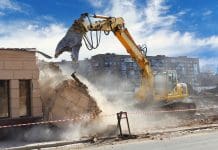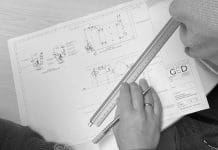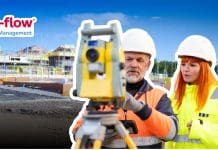Derek Nash, Director of Acoustics Central discusses the benefits of smart noise and vibration monitoring on construction sites
It’s no secret that requests by local planning authorities for noise and vibration monitoring during demolition and construction are becoming more and more prevalent. Whilst not an unreasonable request, thinking of it as a purely a compliance exercise is to miss a valuable opportunity. Here’s why.
The data is valuable
Whilst acousticians can model noise generated by construction activities to some extent, there is no substitute to actual site data. This is because models include a large number of assumptions, such as what plant will be used, where it will be, for how long it will be there, and for how long it will operate. Justifiably, worst-case assumptions are normally made, as planning for this eventuality means all potential scenarios should be addressed. Although this is a safe approach, it can lead to over-specification of mitigation measures, such as opting for more costly and time-consuming techniques where quicker, cheaper techniques may be just as suitable. If you have data from several jobs showing the actual noise and vibration levels, this can serve as valuable evidence to inform future decisions on plant selections, demolition techniques, piling techniques etc., than using a worst-case model in isolation.
On this basis, every time you monitor a site, you are helping to build a valuable data asset which should be used to your advantage. With some smart interrogation you can find out how the noise and vibration levels compared by using nibblers vs. breakers, the actual cost-benefit of using vibratory pile drivers vs. impact drivers, and whether there is a need for increased or a case for reduced monitoring.
Having this type of data in your arsenal can be invaluable when making decisions about future projects. It can also be a great way to demonstrate to the various authorities your responsible attitude of using monitoring to minimise future risks. In fact, given the significant benefits it brings, we would strongly advocate undertaking monitoring as a matter of course where possible.
Real-time data is key
If you’re going to make informed decisions, you need the data as it happens. As such, a smart system will give you the monitoring data in real-time from your computer or smartphone. It’s also very important that the system deliver the information to you in a form that makes sense. It’s no secret that acousticians use a variety of metrics that make even the staunchest mathematician wince. Therefore, your smart system should tell you not just what the levels are, but how these compare to 5 minutes ago, an hour ago, and even yesterday etc. That way if you’re doing something you know is noisy in your experience, or that generates a lot of vibration, you can spot immediately if it’s a level you should be concerned about and take action.
Use your consultant to make your life easier
Noise and vibration is a specialist field, and its measurement is normally undertaken by a trained technical consultant with appropriate education, affiliations and charterships. Because of this, you’re not normally hiring equipment, you’re hiring a service, and this should be made use of to the greatest extent possible.
For example, your consultant can liaise with a local authority to define the parameters of the monitoring, such as duration and measurement locations, and argue for a reasonable approach. This can be documented into a Method Statement to ensure all parties are aware of the details of the exercise. They can liaise with residents or neighbouring businesses to address their concerns, explain what the obligations are, and how these are being addressed.
As such, the earlier you engage your consultant, the more scope there is for cost saving, and the better chance things will run smoothly once you begin work on-site. Having a smart system can also complement this, as you can choose to grant access to the data to other parties such as residents, or the local authority, which can be a good way to build trust.
By using a smart system with real-time access, coupled with a competent consultant brought on-board at the right time, you can take full advantage of the benefits that noise and vibration monitoring has to offer.
Derek Nash is a Director of Acoustics Central, a consultancy specializing in Environmental, Architectural, Building Services and Industrial Acoustics. Derek has been an acoustics consultant for over 13 years, and holds an Honours Bachelor’s degree in Audio Technology, a Master’s degree in Environmental Acoustics, and has been awarded Chartered Engineer status from the Engineering Council.
Derek Nash
Director
Acoustics Central
info@acousticscentral.com
Please note: this is a commercial profile













